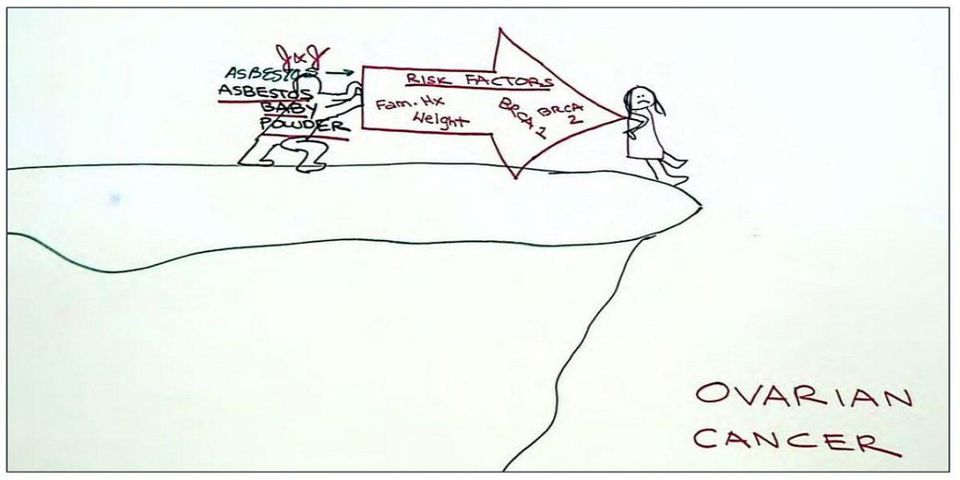It was a pleasure to be interviewed recently by a reporter from The New York Times, to discuss both the tactics used by Johnson & Johnson to deny the presence of asbestos in talc, and the techniques and evidence I used in a trial last year. The diverse and thoughtful jury in that case, faced with documentation long hidden from public and regulatory view, found that J&J has known for decades that its talcum powder products are frequently contaminated with asbestos. As a result, they awarded compensatory and punitive damages of almost $4.7 billion on behalf of 22 victims of asbestos-linked ovarian cancer.
In the aftermath of that trial I became the target of criticism from pro-business writers and lawyers that my approach to the trial, and particularly the demonstrative exhibits I used, were somehow inappropriate. I was called out for bringing a block of veined cheese into the court and by cutting into it showed the jury how talc is mined – there’s no way to separate the naturally comingled minerals of talc and asbestos when they’re dug out of the ground.

I brought a bale of hay into the court and inserted a needle inside – showing that just because the needle may be difficult to find doesn’t mean it isn’t there, just as with asbestos in talc.
As on the recent Times program, I showed the jury how the weight of a needle would not register on a common bathroom scale, but would on a more accurate jeweler’s scale. The obvious point is that J&J might have historically tested its baby powder for asbestos, but the methods they used were not sensitive enough to find the truly dangerous components in the product. They didn’t find what they were looking for because they didn’t look hard enough.
Those and other real world examples showed how J&J used sleight of hand to hide the company’s failure to remove asbestos from baby powder. The illustrations cut through the web of confusion left by J&J and its lawyers, laying bare the truth.
I don’t apologize for this approach. Neither I nor the plaintiff’s bar has a monopoly on demonstrative teaching through simple props and vivid visual cues. Every good teacher uses such tools.
I refuse to join the ranks of lawyers using staid and boring presentation techniques simply because it is easy to do so. I will always seek to educate in the most interesting fashion I can devise, even though an approach that is not blasé may invite criticism from the corporate defendant, at least when it defeats the defendant’s position.
The seemingly self-imposed limitations of many defense counsel don’t provide a justification to criticize or limit the tools that I or any other lawyer might reasonably use – with the approval of the court — to advocate for clients. I’m sure that an interesting approach frustrates opposing counsel sometimes, but advocacy doesn’t have to be boring.
Not surprisingly, this verdict placed St. Louis near the top of the U. S. Chamber’s well-publicized annual list of “judicial hellholes.” The implication of this report is that every large plaintiff’s verdict is wrong, and unfairly taints every judge and every jury in the jurisdiction. That is corporate intimidation of judges and a blatant attempt to stop justice. The courts and juries in the heart of our nation are among the most efficient, fair, and serious of any I’ve encountered in the past 30 years. Of course, it goes without mention (and the Chamber certainly doesn’t trumpet) that the Chamber is funded by J&J and shares national counsel.
This pejorative designation is based on nothing more than the corporate calculations of where one finds a large verdict or series of rulings that hold companies accountable for tragic wrongs. As totaling the dollars seems to be the base metric for a company to use in deciding to introduce and keep a dangerous product on the market, it’s perhaps not surprising that this remains the Chamber’s methodology.
There is nothing deceptive in a block of cheese or bale of hay. There is deception if the news media and public don’t see through the agenda of those complaining.

Again, I’ve decided not to be upset if someone says that I’m creative and innovative in talking to juries. Thank you. But I am upset by those on the losing side who seek to demean our system of justice and deceive the public.
